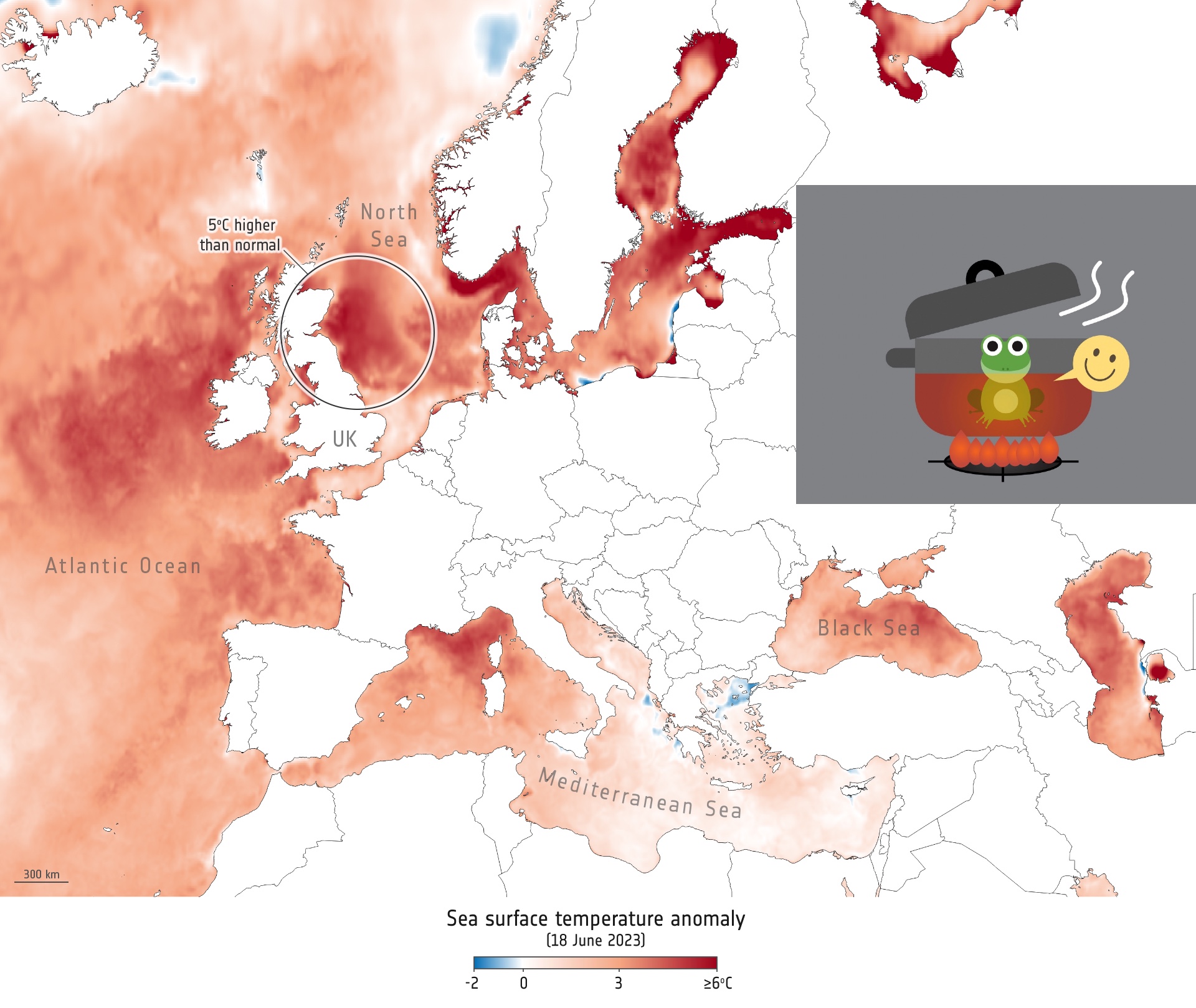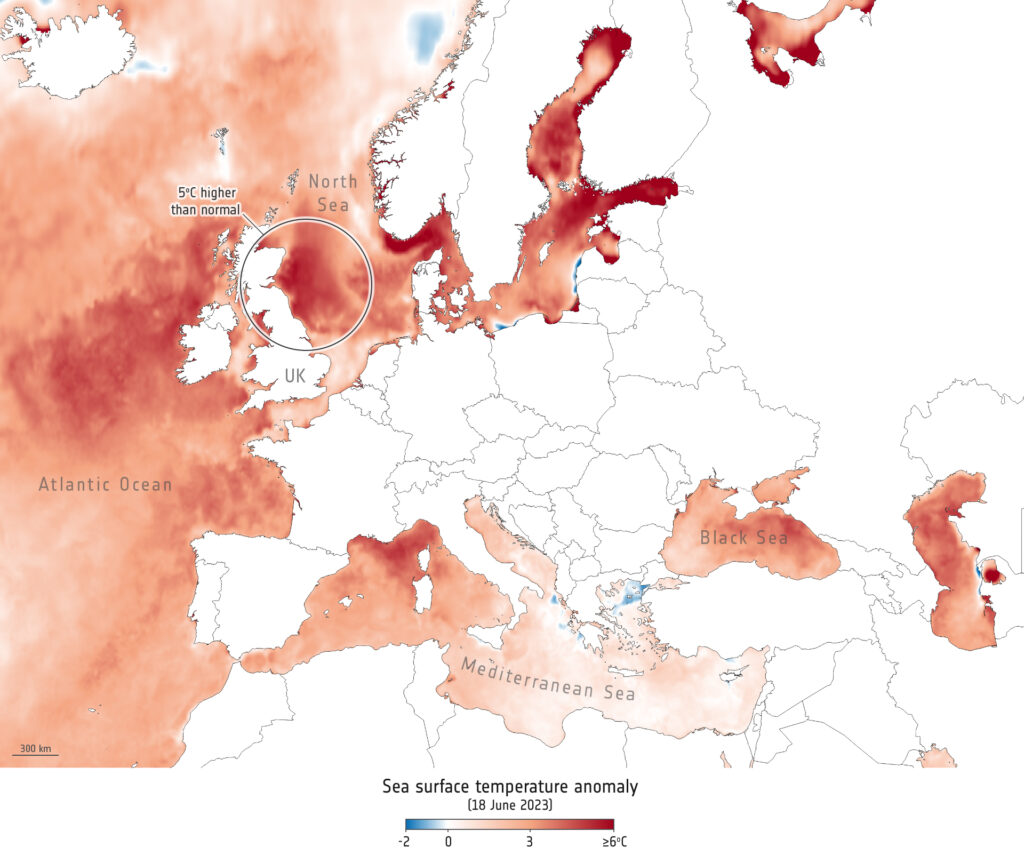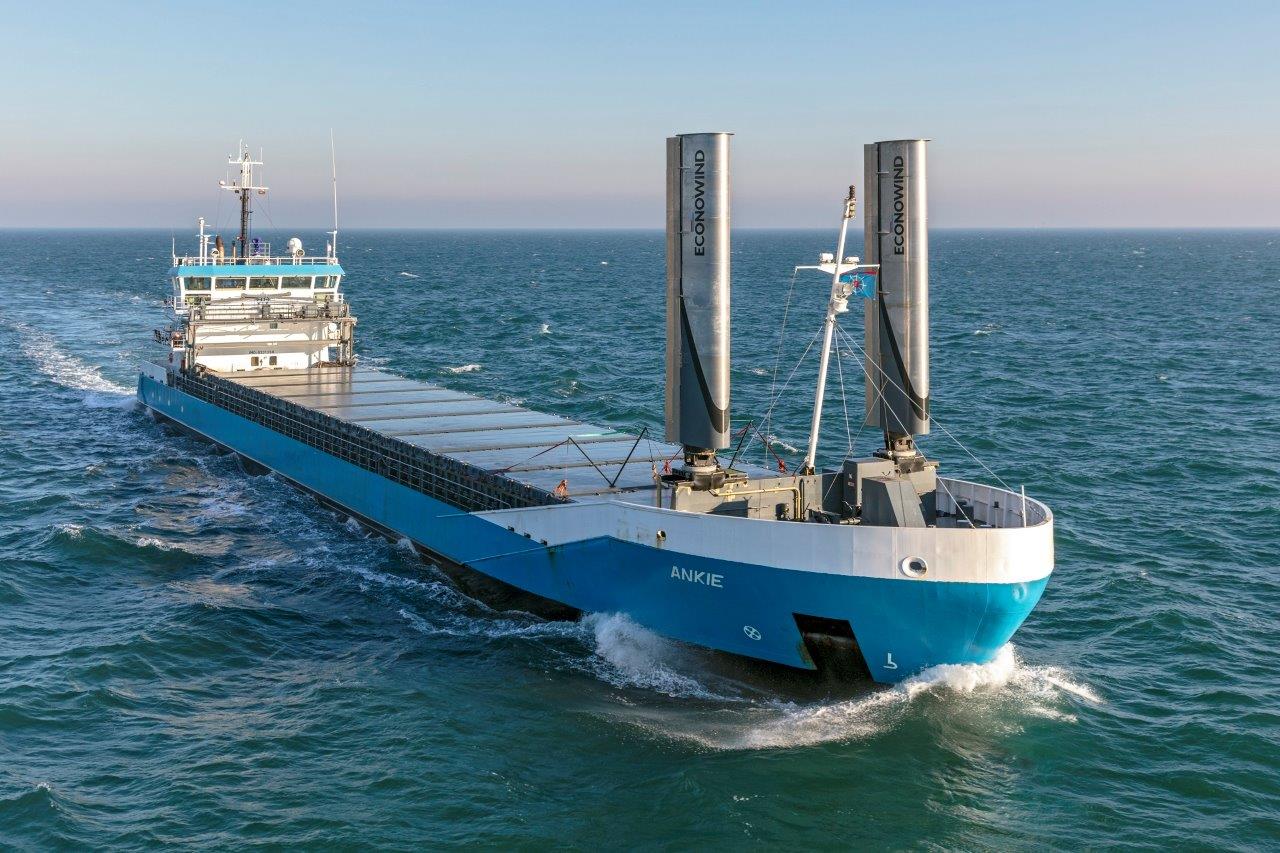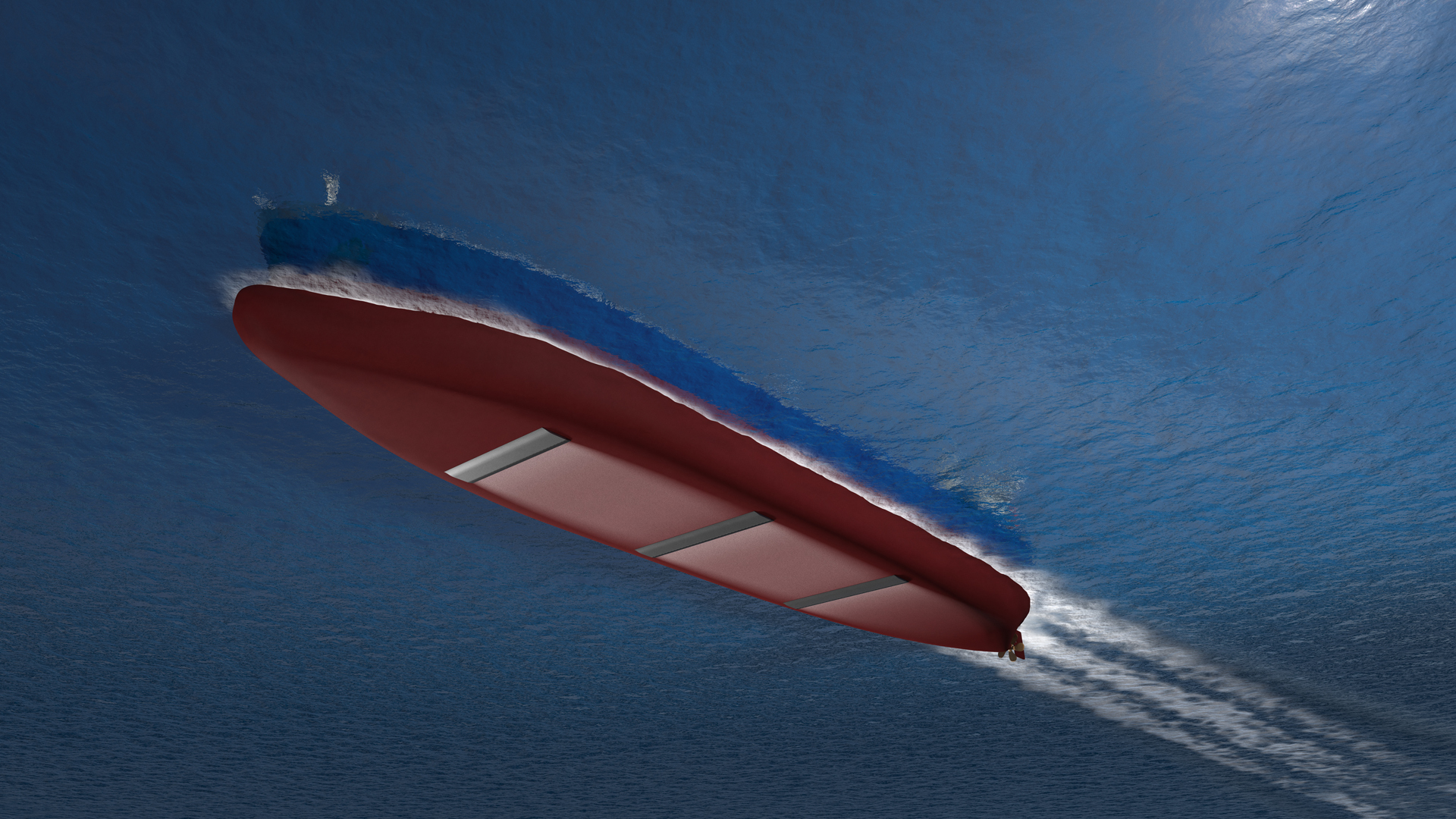As we pass through the summer solstice, the European Space Agency published this photo, showing the levels of sea temperature rise around Northern Europe.
It’s not even late summer when most of the region’s waters reach their highest temperatures, and already ESA is saying some waters around the UK and Ireland are five degrees warmer than normal.
ESA said the coastal regions off the east coast of the UK, from Durham to Aberdeen, and off the northwest coast of Ireland are particularly warm. The map shows sea surface temperatures on 18 June 2023, compared with the long-term (1981-2016) average.
In the almost land-locked Baltic Sea, an area at risk of huge, potentially toxic algae blooms, the temperatures are over eight degrees above average.
ESA states: Marine heatwaves occur due to a combination of atmospheric and oceanographic processes. The sustained high temperatures could trigger mass mortality of fish and other marine life. Also, marine heatwaves are linked to more extreme weather events – making them more intense and longer lasting.
The warming of the seas around the UK coincides with a global trend of rising air and ocean surface temperatures in recent months. According to data from the Met Office dating back to 1850, both April and May 2023 witnessed the highest-ever recorded global sea surface temperatures.
These elevated temperatures have been associated with a series of extreme heat events worldwide, contributing to record-breaking wildfires in Canada, heatwaves in China and Siberia, and reduced sea ice extent in the Antarctic.
June 2023 is also on course to hit record heat levels. According to the Copernicus Climate Change Service, the first 11 days of June were the hottest ever recorded worldwide for this time of year. This is the first time that global air temperatures have exceeded pre-industrial levels by more than 1.5°C during the month of June.
In a post on th ESA website Craig Donlon, Head of Earth Surfaces and Interior Section at ESA, cut to the chase in how this situation will only get worse as global meterological conditions develop, and the ocean current phenomomen El Nino increases, giving a dire forecast for 2024.
“Extreme Marine Heatwaves are not an everyday event in UK waters. Satellite data, together with data on the ground, will allow us to document the impact of this marine heatwave including stress on the marine ecosystem, the impact on industries such as aquaculture and fisheries, modification of local wind patterns and potential rainfall events that may emerge later.”
Some of this excess heat will find its way into the Arctic Ocean via ocean currents through the Fram Strait and Norwegian Sea further exacerbating the demise of Arctic sea ice. We will be monitoring in detail to see how all these aspects evolve with great interest”.
Increases in ocean temperatures are leading to increased risks of invasive species transfers as local waters warm up and become more accommodating for invasive species which are known to hit aquaculture sites, offshore installations, and ports. This puts pressure on regulators to create robust ship biofouling rules in the future. Increased sea temperatures are also causing waters to expand (basic physics but on a huge scale) and the ice levels in the Arctic to diminish, adding to sea water volumes and increasing sea levels.
Rising sea levels are also a concern for ports and coastal cities which are struggling to adapt to these challenges, putting pressure on shipping with port restrictions and new trade patterns emerging.


































